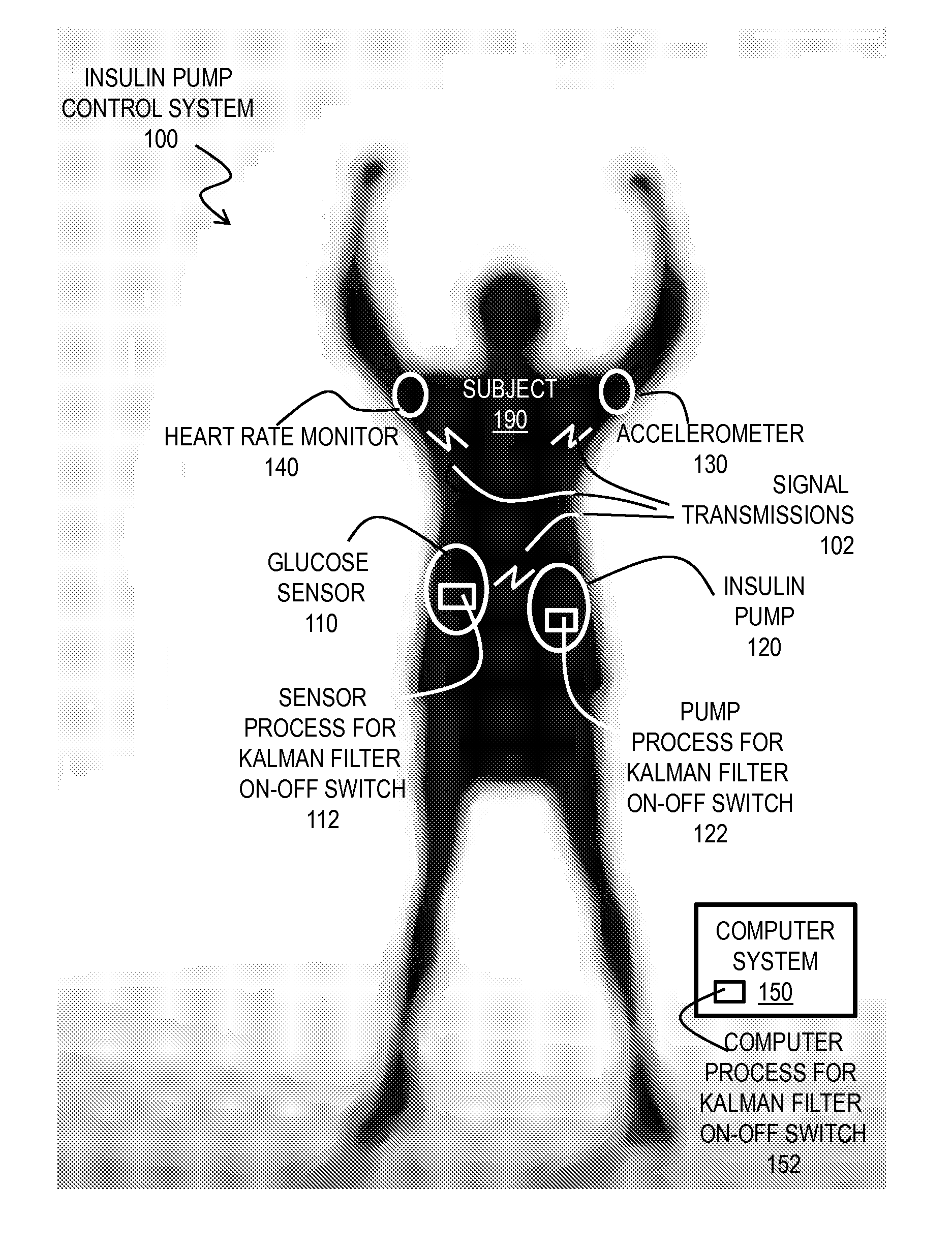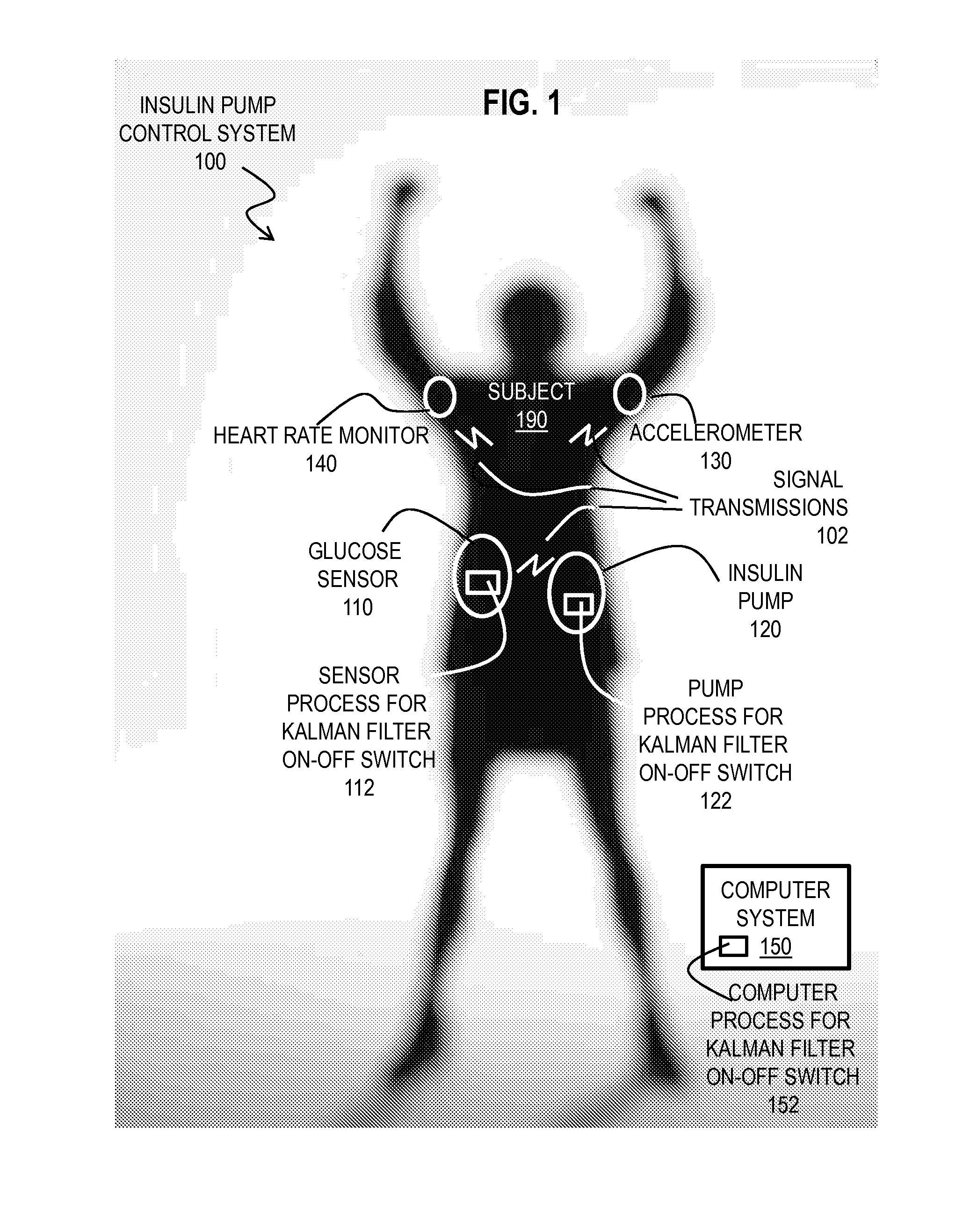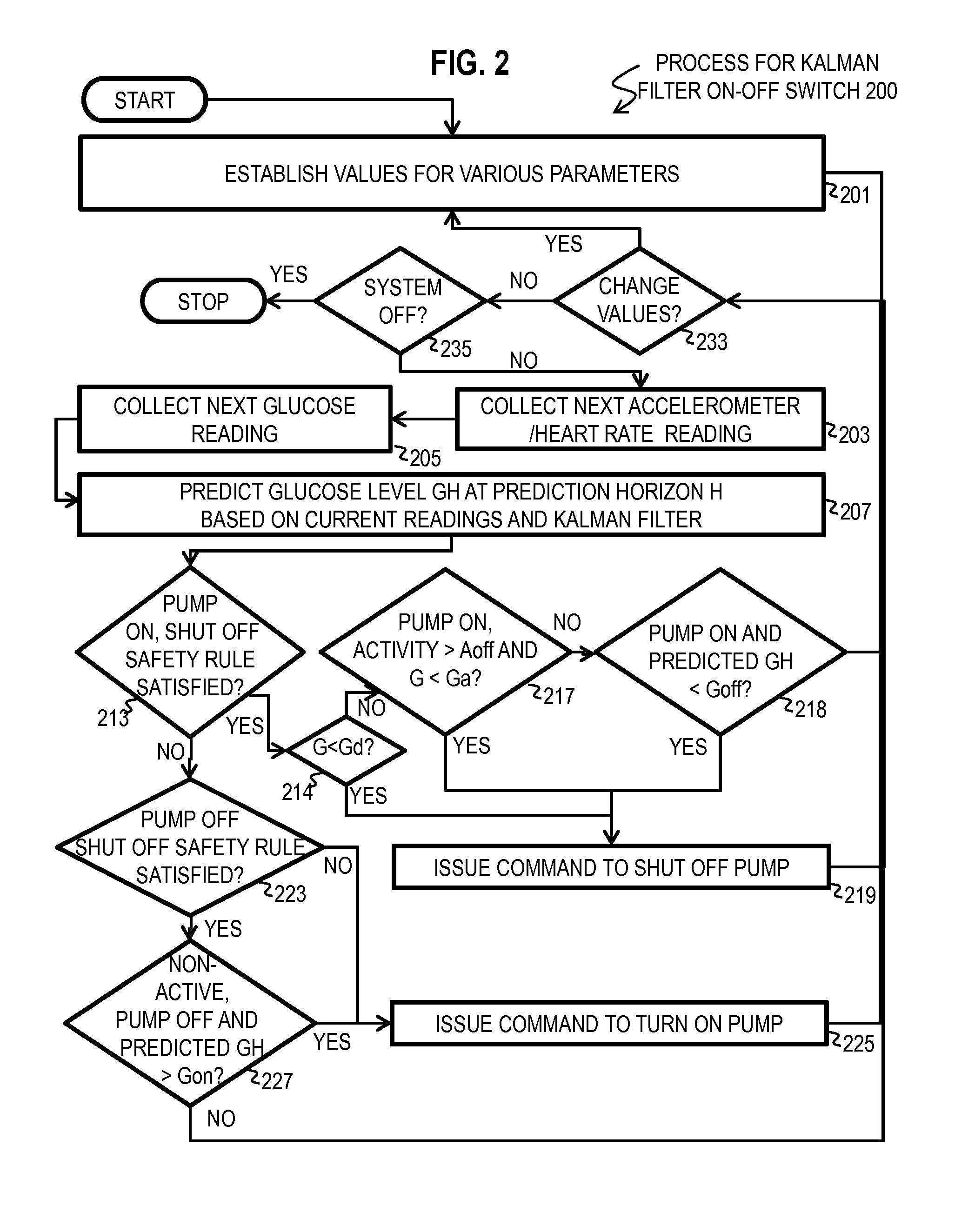Kalman Filter Based On-Off Switch for Insulin Pump
a technology of on-off switch and insulin pump, which is applied in the field of kalman filter based on-off switch for insulin pump, can solve the problems of hyperglycemia and the associated sluggishness, chronic nerve, heart and kidney damage, and people with diabetes who do not want to pay constant attention to their glucose levels, etc., to achieve low blood glucose levels, and low blood glucose levels.
- Summary
- Abstract
- Description
- Claims
- Application Information
AI Technical Summary
Benefits of technology
Problems solved by technology
Method used
Image
Examples
experimental embodiment
3.1 Experimental Embodiment A
[0063]Several example embodiments running on a computer system 150 rather than on a processor in insulin pump 120, with specific values for various parameters, are described in this subsection.
[0064]In this embodiment, a continuous glucose monitoring receiver and insulin pump are housed in the same hardware known as the MEDTRONIC™ MINIMED PARADIGM® REAL-TIME REVEL™ Insulin Pump (model MMT-523 or MMT-723; refer to PMA P980022 / S081) of Medtronic, Inc. of Minneapolis, Minn. The MEDTRONIC™ MINILINK™ (model MMT-7703; PMA P980022 / S018) serves as the transmitter for the REAL-TIME REVEL™ System. A Comlink (MEDTRONIC™ model MMT-7304, premarket notification K021974) serves as the conduit for communication between the REAL-TIME REVEL™ System and the host computer. The glucose sensor used with the MINILINK™ transmitter in the embodiment is the SOF SENSOR® (MEDTRONIC™ model MMT-7002C; refer to PMA P980022 / S012), inserted using the SOF SERTER™ (MEDTRONIC™ model MMT-75...
embodiment b
3.2 Embodiment B
[0086]More recent embodiments and experimental results are described in this subsection. In this embodiment, H is 70 minutes but Goff is 80 mg / dL rather than nominal 70 mg / dL and Gon is 100 mg / dL rather than nominal 90 mg / dL
[0087]The experiments conducted used either or both the ENLITE™ CGM or the SOF CGM and were compared to the CGM values fed to the algorithm, denoted “Algo CGM.” The triangles at the top are the suspension cues from this algorithm. The experimental protocol included: 7 PM admission (dinner at 6 PM); systematic increase in basal insulin at 9 PM (to induce hypoglycemia); continued observations until 7-8 AM; subjects remain in recumbent position; reference glucose taken every 15-30 min (including either or both a YSI measurement or a measurement from a GLUCOSCOUT® sensor available from INTERNATIONAL BIOMEDICAL™ of Austin, Tex.); blood ketone measurements at study onset and again after suspension, before breakfast at 8 AM. The GLUCOSCOUT® is a referenc...
embodiment c
3.3 Embodiment C with Activity Level
[0089]This subsection describes some embodiments of method 200 that include steps 203 and 217 to monitor and utilize activity level. For convenience, these embodiments are called method 200 with step 217.
[0090]Regular aerobic exercise is considered an essential component of the management of type 1 diabetes (T1D). However, exercise-associated hypoglycemia is a frequently reported adverse event and can occur during exercise or several hours afterwards. Although pre-meal dose reduction of exogenous insulin or increasing carbohydrate intake can be effective at decreasing the incidence of exercise-associated hypoglycemia, people with T1D often do not perform such adjustments. Suspension of an insulin pump at the beginning of moderate aerobic exercise has been shown to reduce the risk of exercise-associated hypoglycemia, albeit with an increased risk of hyperglycemia. Algorithm-based pump suspension offers a more nuanced, user-independent means for red...
PUM
 Login to View More
Login to View More Abstract
Description
Claims
Application Information
 Login to View More
Login to View More - R&D
- Intellectual Property
- Life Sciences
- Materials
- Tech Scout
- Unparalleled Data Quality
- Higher Quality Content
- 60% Fewer Hallucinations
Browse by: Latest US Patents, China's latest patents, Technical Efficacy Thesaurus, Application Domain, Technology Topic, Popular Technical Reports.
© 2025 PatSnap. All rights reserved.Legal|Privacy policy|Modern Slavery Act Transparency Statement|Sitemap|About US| Contact US: help@patsnap.com



